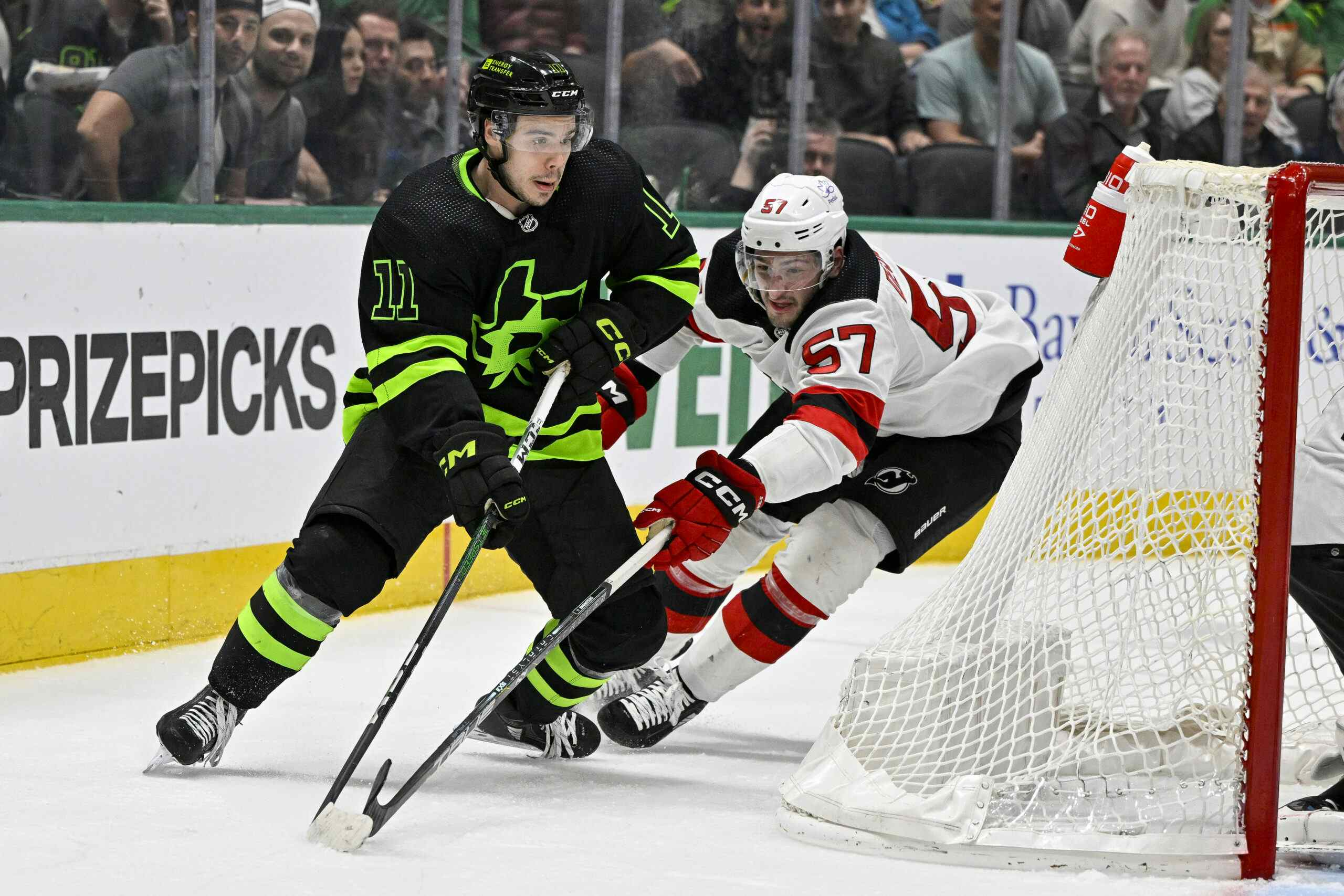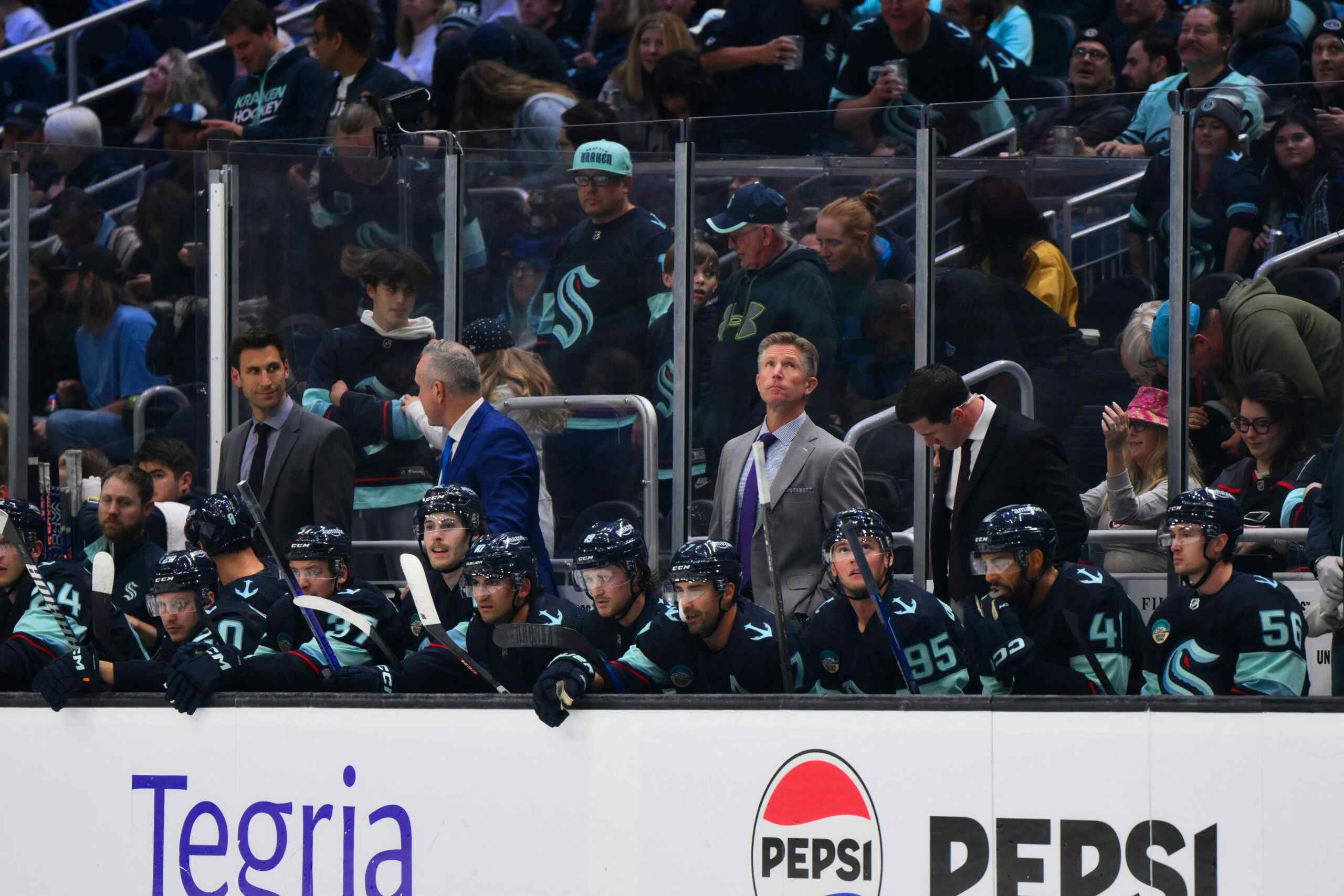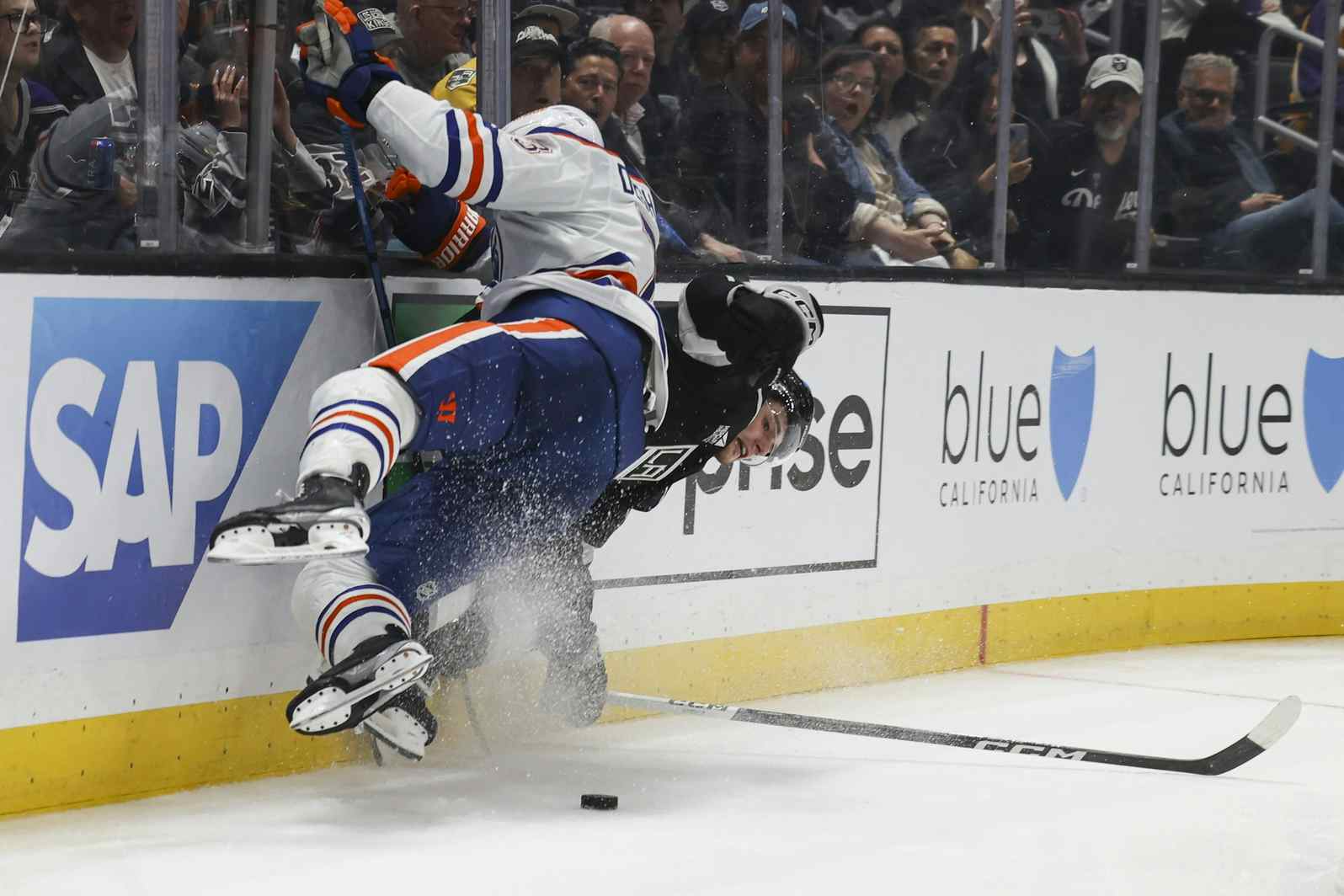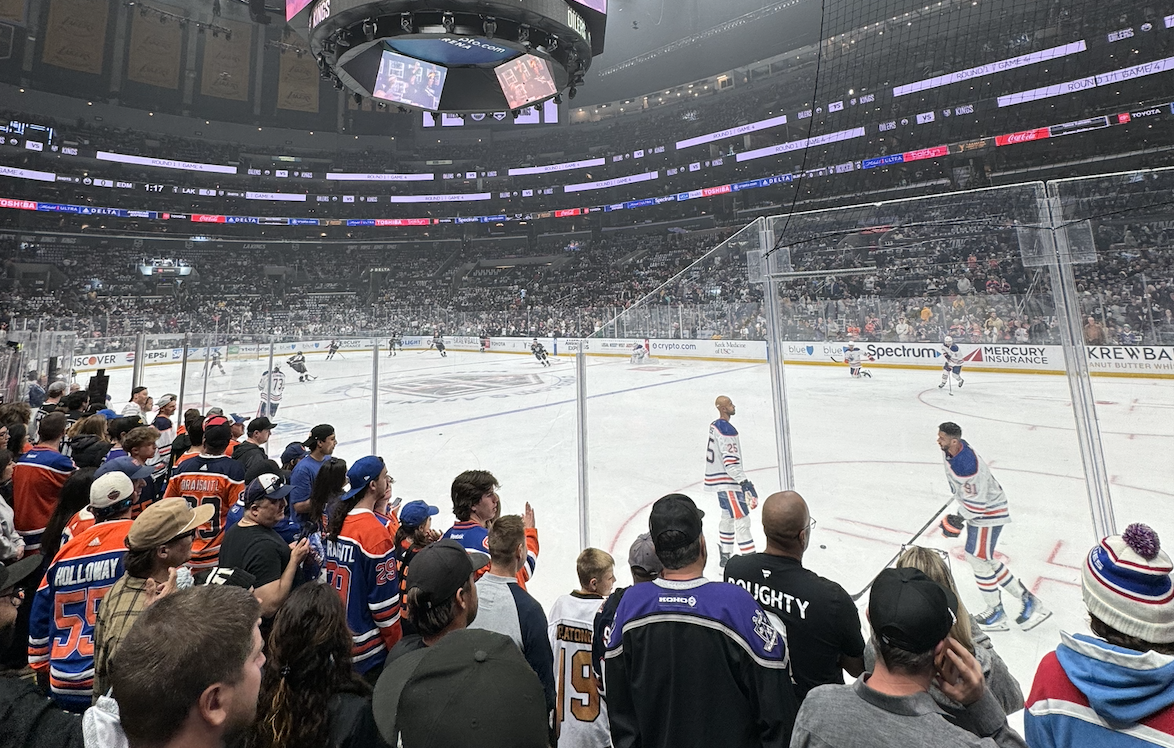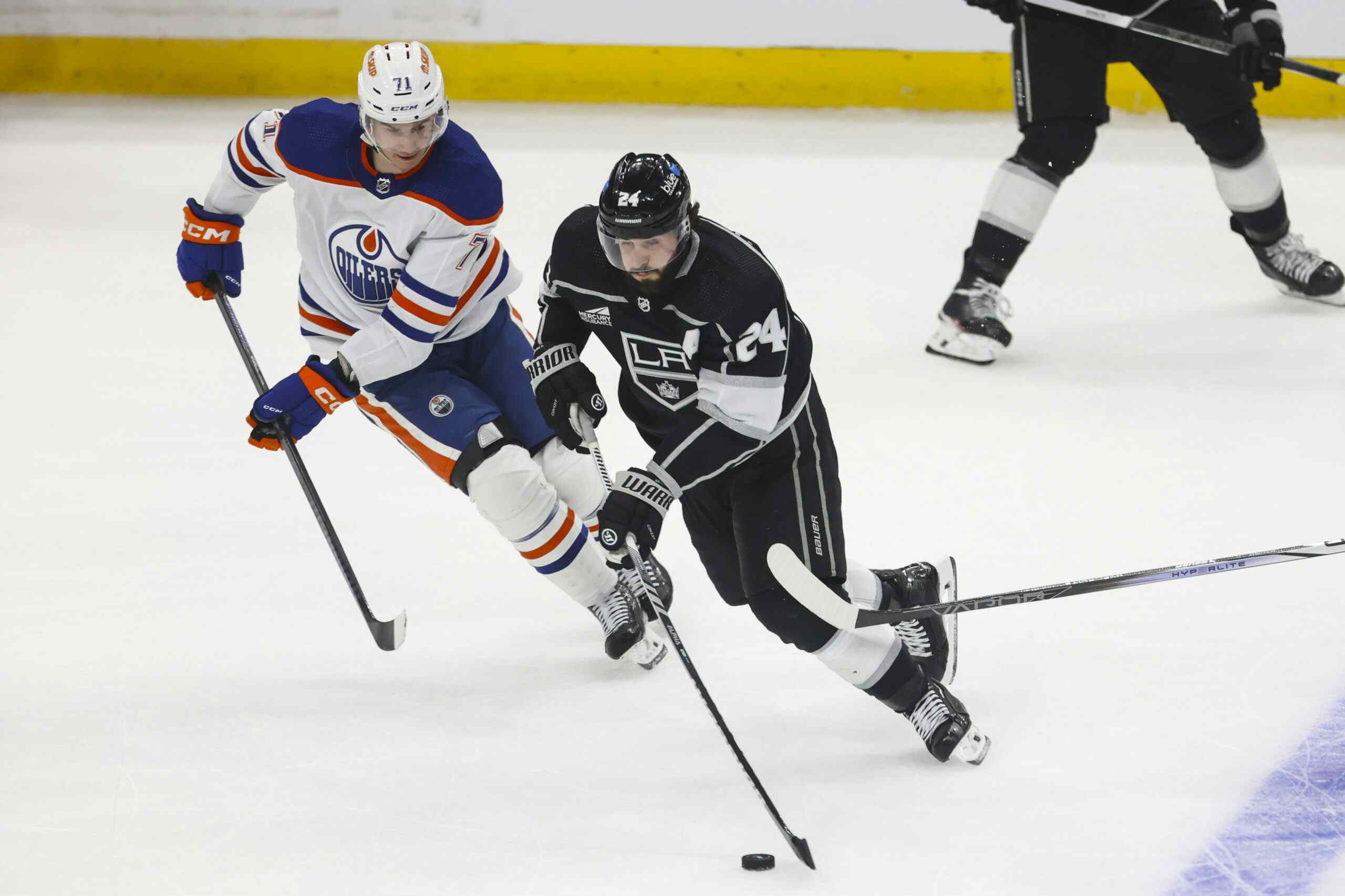Does Free Agent Status Matter Anymore?

By Jason Gregor
4 years agoI still hear and read the term “buying free agent years” when people discuss NHL contracts, but I’m not sure it is relevant anymore.
It is interesting to note that since a salary cap was put in place after the 2005 lockout, the salaries of NHL players has actually changed significantly. Players don’t have to wait until unrestricted free agency to get paid huge money.
In 2003/2004 only two players in the top-30 highest paid were under 28 years of age: Jarome Iginla and Joe Thornton. Iginla was in his eighth season and was ninth in salary at $8 million, while Joe Thornton was the 29th highest paid player at $5.5 million in his seventh season.
Only four other players were in their twenties, while 24 of the top-30 highest salaries were 30 years of age or older.
In 2005/2006, the first year out of the lockout, we saw immediate change in the distribution of salaries.
Nine players 27 years of age and younger were now in the top-30 in cap hit, and 12 were under the age of 30.
By 2010/2011 the NHL pay structure had swung in the favour of younger players.
Only 12 players in the top-30 cap hits were 30+ years of age.
The top-three paid players were Alex Ovechkin ($9.5m), Sidney Crosby and Evgeni Malkin ($8.7m each). They were 24, 22 and 23 and all on their second contract. They were the elite scorers in the game, so it makes sense they got paid big money, but other young players who were good and just out of their entry-level contracts like Anze Kopitar and Nicklas Backstrom were 17th and 18th in cap hit, while Patrick Kane and Jonathan Toews were tied for 26th in cap hit at $6.3 million.
In the three previous seasons Ovechkin, Malkin and Crosby were first, second and third in total points, Backstrom was eighth, Kane 17th, Kopitar 20th and Toews 38th. Toews had just finished second in Selke voting, and the others were all-stars. There were two D-men in the top-15 in cap hit: Zdeno Chara (ninth) and Brian Campbell (11th), while Henrik Lundqvist was the top goalie (16th). There were a total of three goalies in the top-30 and seven D-men.
Fast forward to today and the NHL salary structure is poised to change once again, at least for forwards.
Currently, Connor McDavid and Auston Matthews are #1 and #2 in cap hit. Both are early into their second contracts. Jack Eichel (eighth) and Leon Draisaitl (23rd) are the only other players under 24. There are five D-men and two goalies in the top-30 cap hits.
But we are about to see a major influx of young players jump into the top-30, and likely the top-20.
Mitch Marner (94 points), Brayden Point (92), Mikko Rantanen (87), Sebastien Aho (83), Matthew Tkachuk (77) all finished in the top-31 in NHL scoring this year and will be 22 or 23 years young this season. Patrik Laine had a down season, by his standards, with 30-20-50, but over the past three seasons he is sixth in goals with 110 and trails only Matthews (111), McDavid and John Tavares (112), Nikita Kucherov (120) and Ovechkin (133). Laine will get a hefty raise, but I see him getting a bridge deal.
Jeff Skinner was a pending UFA and he signed an eight-year deal worth $72 million earlier this week. His $9 million cap hit is the 16th highest in the NHL. He had a career best 40 goals and 63 points last season. I think this was a desperate signing by the Sabres. They couldn’t afford to lose him, especially after how bad the Ryan O’Reilly trade looks less than a year later. Skinner is a good player, but he isn’t elite and has never produced more than 63 points, yet he makes $9 million a year.
Point had 41 goals and 92 points. Do you think his agent will want him taking less than Skinner? Can’t see why.
I think the days of buying UFA years are over for productive forwards. It used to be only the truly elite like Ovechkin, Crosby, Malkin got big money out of their ELC, but this summer that is going to change, and once that door opens it will be impossible for NHL GMs to close.
A GOOD THING?

Apr 17, 2019; Toronto, Ontario, CAN; Toronto Maple Leafs forward Mitchell Marner (16) pursues the play against Boston Bruins in game four of the first round of the 2019 Stanley Cup Playoffs at Scotiabank Arena. Mandatory Credit: Dan Hamilton-USA TODAY Sports
I’d argue this is a good thing for teams. They will be locking up young players just entering their prime, instead of paying 27-30-year-olds big money. Your chances of having a young player not living up to his big contract are much lower than an older player. We have decades of data to prove what are the most productive years for the vast majority of NHL players, especially forwards, and it isn’t between the ages of 28-34.
I’m curious how teams and the agents will approach the signings.
Mitch Marner’s agent is looking for $10+ million/year contract, and if he gets it why wouldn’t Rantanen, Point or Aho command the same?
The past two seasons Marner has produced 48-115-163 in 164 games (.99 points per game), the 19th most points in NHL over that span.
Rantanen has 60-111-171 in 155 games (1.10 PPG). 16th most points in NHL.
Point has 73-85-158 in 161 games (0.98 PPG). 23rd most points in NHL.
Aho has 59-89-148 in 160 games (0.94 PPG). 29th most points in NHL.
Tkachuk has 58-68-126 in 148 games (0.85 PPG). 57th most points in NHL.
Rantanen has 60-111-171 in 155 games (1.10 PPG). 16th most points in NHL.
Point has 73-85-158 in 161 games (0.98 PPG). 23rd most points in NHL.
Aho has 59-89-148 in 160 games (0.94 PPG). 29th most points in NHL.
Tkachuk has 58-68-126 in 148 games (0.85 PPG). 57th most points in NHL.
Then you look at some other stats courtesy of Corsica.
Player P/60 GF% CF% PDO
Marner 2.43 56.7 51.9 102.5
Rantanen 2.12 57.6 51.9 101.9
Point 2.50 60.5 52.0 103.3
Aho 2.16 57.9 55.5 101.1
Tkachuk 1.99 51.5 57.0 98.2
Marner 2.43 56.7 51.9 102.5
Rantanen 2.12 57.6 51.9 101.9
Point 2.50 60.5 52.0 103.3
Aho 2.16 57.9 55.5 101.1
Tkachuk 1.99 51.5 57.0 98.2
You can look at PK ability, the fact Point is the only centre and the best goal scorer, and I don’t see how anyone can suggest Point isn’t worth as much, if not more than Marner. I see Rantanen in same boat as Marner. I think Aho is right there as well. He doesn’t have the elite linemates like the other three and still has great numbers. Tkachuk is slightly below, but his ability to draw penalties and antagonize adds to his value as well.
I don’t see any of them coming in under $8 million a year, which would tie them for 28th in AAV next season courtesy of PuckPedia.
It will be fascinating to see which one signs first. Will that set the bar? Point plays in Tampa Bay and tax implications could impact his AAV. He will be taxed less than the others, so will his cap hit reflect that? Other teammates in Tampa have taken a lower cap hit because of this.
Which team signs their top-end RFA first?
OFFER SHEET…

I’ve heard for years about an offer sheet, and who should/would make one, but we haven’t seen one since the Calgary Flames offered Ryan O’Reilly a two-year deal during the 2013 lockout shortened season. Colorado matched it.
Until I see one I won’t believe a team would do it, but here is the compensation chart if you are interested.
$1,395,053 or below: None
$1,395,054-$2,113,716: 3rd round pick.
$2,113,717-$4,227,437: 2nd round pick.
$4,227,438-$6,341,152: 1st and 3rd round picks.
$6,341,153-$8,454,871: 1st, 2nd and 3rd round picks.
$8,454,872-$10,568,589: Two 1sts, one 2nd and one 3rd round picks.
$10,568,590+: Four 1st round selections.
$1,395,054-$2,113,716: 3rd round pick.
$2,113,717-$4,227,437: 2nd round pick.
$4,227,438-$6,341,152: 1st and 3rd round picks.
$6,341,153-$8,454,871: 1st, 2nd and 3rd round picks.
$8,454,872-$10,568,589: Two 1sts, one 2nd and one 3rd round picks.
$10,568,590+: Four 1st round selections.
Offering $10.5 million makes the most sense as it only costs you two firsts, and one second and a third. However, I don’t see that being enough money to scare off any of those teams.
Would you want one of them at $12 million and sacrifice four first rounders? I can’t see it.
I think it is more realistic to see teams make an offer sheet on a middle six player on a team up against the cap.
Outside of these five young players, and Laine (who I think takes a bridge deal, which will still pay him at least $6 mill), there are some other good, young RFAs who are going to get big raises.
Timo Meier had 30 goals and 66 points. Kyle Connor had 34 goals and 66 points. What will the Canucks do with Brock Boeser (26-30-56 in 69 games)?
This will be the summer of the RFA, and despite Skinner having UFA status, I suspect at least four of these RFAs end up with a higher AAV this summer.
The younger players are getting more money early, and I don’t think the term “buying UFA years” carries the same cache it once did.
Recently by Jason Gregor:
Recent articles from Jason Gregor

